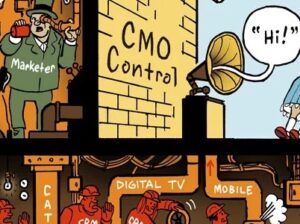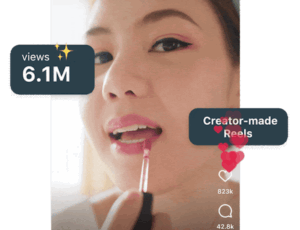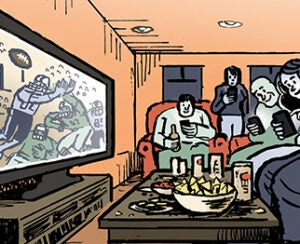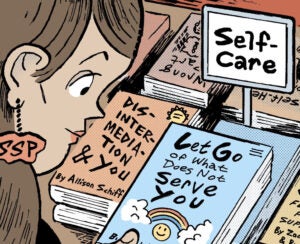The AIs are here. Now they need an ad network.
In all seriousness, last month saw the public release of ZeroClick, an ad network for AI chatbot products launched by a group of familiar faces in the world of ecommerce and ad tech.
Ryan Hudson, ZeroClick’s founder, was a co-founder of Honey, a browser extension that finds and applies online coupon codes automatically at checkout. PayPal acquired Honey for $4 billion in 2020.
After departing the conglomerate in 2022, Hudson went back to his roots, so to speak. Last year, he founded Pie Adblock, another browser extension, but this time for ad-blocking solutions.
Last month, the Pie business launched a new spinout, the aforementioned ZeroClick, which Hudson tells me is now the primary focus of the company, rather than iterating on the ad blocker. Just a few weeks ago, the ZeroClick business announced a new $55 million investment from many of the same investors and funds that backed Honey.
So what’s going on?
If you’re not familiar with Pie, it’s an ad blocker that has controls for users to allow certain ads and can credit cash-back offers from merchant partners or help people earn money with affiliate links. Hudson says it has roughly two million users.
The Pie team, about 30 full-timers – most of them formerly of Honey – had been working on a contextual ad-targeting solution. But they pivoted to an AI-based advertising product “when we realized what we’d built was highly applicable to AI environments,” Hudson says.
Which led to the launch of ZeroClick.
But wait. How was a contextual targeting solution for ad-block users applicable for AI products?
The challenges they address are actually quite similar, Hudson says. As an ad blocker that doesn’t want to remove all ads, but rather only serve ads that users choose to see, the company realized that the types of ad formats and media channels people wanted were things like shopping ads for products they were interested in. Sponsored shopping listings, Hudson says, are often better targeted than the organic result.
AdExchanger Daily
Get our editors’ roundup delivered to your inbox every weekday.
Daily Roundup
ZeroClick works by allowing publishers, merchants or developers to embed the product into their own AI-based solutions. If, for example, a startup creates a business AI tool for annotating notes and meetings or a chatbot agent for travel sites, those solutions can tap into ZeroClick to generate ads and insert potential paid media into the AI output.
Although ChatGPT doesn’t itself support advertising, ZeroClick, like many other enterprise AI startups, is building on its LLM solution, Hudson says. By integrating ZeroClick, other AI tools, chatbots or agents can access a paid information resource contributed by clients – information not typically incorporated by the major LLMs.
For instance, if a retailer uses ChatGPT as the underlying technology for its on-site or in-app chatbot, the chatbot’s results are not informed by any paid marketing resource. With ZeroClick, businesses would have more control over how their products or brands are presented and over the reviews referenced. They might also be able to pay to have their products show up more often.
None of those things are possible when going through OpenAI’s ChatGPT, and the same goes for other LLMs, including Perplexity, Anthropic and Google’s Gemini.
But developers want that option, Hudson says. There is a tsunami of enterprise AI solutions trying to make $10 to $20 a month from a SaaS product while facing massive churn rates. Being able to offer a free product through the ZeroClick ad-supported integration could help retain a tier of customers who otherwise would ditch.
The first ZeroClick integration, unsurprisingly, is Pie Adblock, which has its own AI-based chatbot, but also a ceiling on its growth.
“We realized that no matter how big we made Pie,” Hudson says, “it was going to be subscale as an ad system.”
Scaling up from nothing
ZeroClick may have a sound business rationale, but there’s a problem: Its hypothetical value proposition doesn’t exist yet in the current online system.
For example, even while ZeroClick is self-described as an ad network, it isn’t really an ad network in the programmatic sense. ZeroClick integrates with the reasoning process of an AI solution but doesn’t generate consistent, repeatable new ad units around the web.
The opportunity is there, though, Hudson says.
“I strongly believe the native ad format for AI is going to be – and we’re going to try to make it be – paid consideration at the reasoning time,” he says.
Still, “paid consideration at the time of reasoning” (PCTR, anyone?) will be a difficult metric to nail down. CPCs, ROAS and click-throughs are blunt instruments but are much easier for marketers to get their heads around.
ZeroClick also doesn’t plug into any OpenRTB environments.
“I think there’s a world in the future where we do tap into a whole bunch of value-added providers bringing demand to the table, whether that’s agencies or other networks bidding into the platform on behalf of advertisers,” Hudson says. (And he’s a former OpenX product manager, so he knows the ad tech ecosystem.)
For now, though, he says, ZeroClick’s focus will be on letting merchants or other AI developers integrate so as to subsidize their own products, not unlike how programmatic ads buoyed the open web’s development.
But, Hudson adds, this time – hopefully – everyone is wise enough not to let a “potential monopolist” take over the role of organic and paid AI distribution.
“I think all of the AI players [OpenAI, Google, Microsoft, et al.] are going to have something like this, and my sense is they will want to own it,” he says. “I’d prefer for it to exist outside the walls of any core incumbent.”


















